Australia’s next war in the Pacific will be urban combat
This is what an Indo Pacific war will look like and how the US Armed Forces and the Australian Defence Force will join forces. See the video.
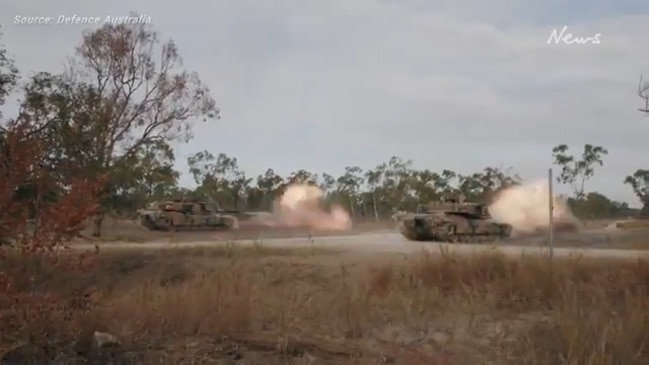
National
Don't miss out on the headlines from National. Followed categories will be added to My News.
A war in the Pacific is more likely to involve urban combat than a mass maritime battle, one of the US Marines’ most senior officers has warned.
The 1st Marine Division commander Major General Ben Watson, who is in Australia to oversee his troops involved in the Talisman Sabre 23 military exercise, said the threat had prompted an evolution in US-Australian war fighting tactics.
And he said the defence drill, concluding this weekend, was not “a show to make people feel good” but make troops combat ready for the next generation warfare.
Gen. Watson said the conflict threat had evolved and so too had how his troops practised with Australian Defence Force counterparts as they consider what happens when a competitor like China becomes an adversary.
There would be no D-Day style mass amphibious assaults or big ship sea battles, instead Gen. Watson sees smaller marine littoral combat teams making tactical insertions to conduct urban warfare.


He said it was about “rebalancing” his forces’ power projection with a greater sea to shore capability to achieve effects from the land and waterways.
“When we look at potential threats to the rules-based international order that we all believe in and want to protect, there are certain folks who are likely to become more adversary than competitors going forward,” he said in reference to China.

“It’s no secret where the key terrain is if you want to affect the critical sea lanes and communication that is the lifeblood of Australia and the US and most nations. You look at the terrain you might expect to become contested, so you might have to fight for it or defend it and there are not too many beaches or airfields around the Western Pacific or anywhere these days that don’t contain a town or a village or a city ….
“The evolution in the threat out there globally would seem to rule out the kind of large scale conventional amphibious operations, amassing ships within view of a shoreline that we have executed many times in the past.
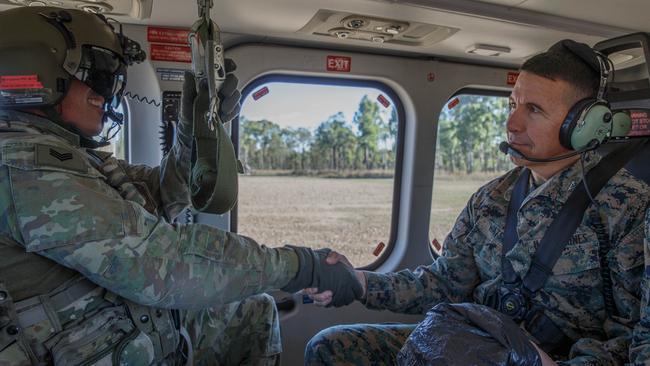
“As a Marine Corps I think it’s important to note we are still anchored as a force on the traditional combined arms combat operations that we have done in the past, but what we have found is the need to rebalance and increase our capability in the maritime littoral domain and not just the ability to project power from sea to shore but be able to achieve effects from the land and into the waterways.”
Since 2011, up to 2500 Marines a year have deployed to Australia as a Marine Rotational Force, part of Gen. Watson’s 30,000 strong 1st Marine Division, and he came to Australia with one question in mind.
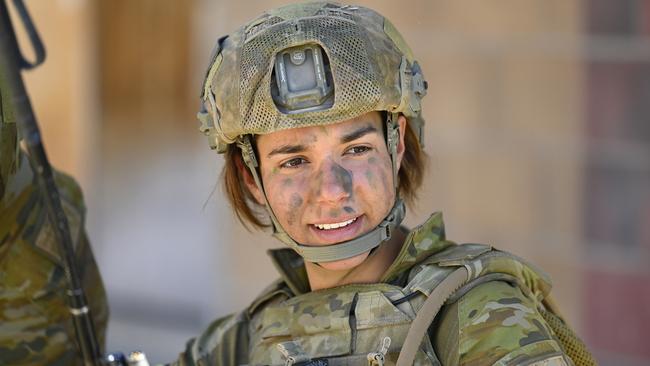
Was the Down Under deployment making them more combat ready than when they left US?
As he went around the room of a small group of assembled US commanders in the Darwin barracks this week, every one answered in a single word – “absolutely”.
There is a sense of urgency in his words.
Like the threat of conflict in the region, US Marines are evolving and using their deployment and exercises like Talisman Sabre 2023 to drill new tactics.
Such is the pivot, the Marine Corps has ditched its tanks and much of its artillery pieces now seen as legacy weapons to become smaller and more agile and armed with greater tech.
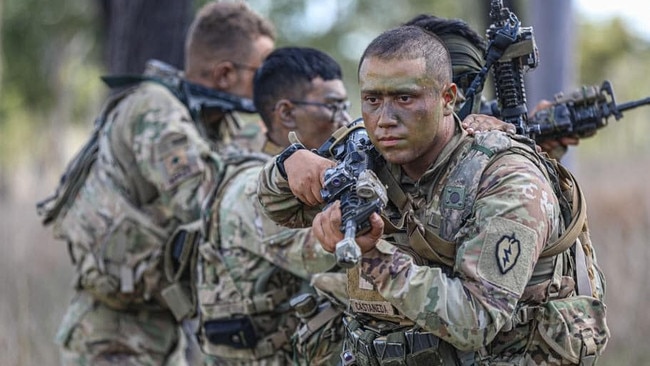
Their changes coupled with an ever increasing coercive China have significant implications for the ADF and notably Army and Special Forces.
Even Gen. Watson’s arrival here is in itself significant since it is the first time the division’s headquarters has deployed to Australia in 75 years, to use Talisman Sabre 23 to test command and control, tactical co-ordination and communication and interoperability with the ADF some of the other 12 nations taking part in Talisman.
The last time the 1st Marine Division Headquarters deployed to Australia was post the Battle of Guadalcanal during World War II, when they set up about the Melbourne Cricket Ground (MCG) with troops billeted in Ballarat.
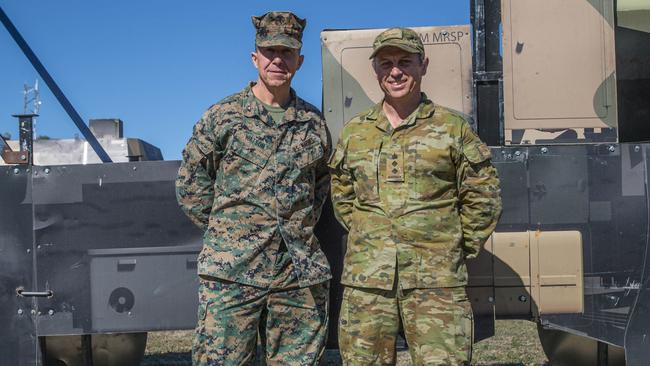
A trove of Defence briefing notes released last month through Freedom of Information, reveal it’s Beijing’s “dangerous and coercive” use of fishing boat militias that could trigger conflict and shut the seas that carry 83 per cent of Australia’s trade.
Director of Talisman 23 ADF Brigadier Damian Hill agreed geography and global threats had dictated what the more than 30,000 personnel involved in Talisman had rehearsed.
Speaking prior to the tragic death of four Australian crewmen aboard the MRH90 Taipan helicopter crash during Talisman, Brig. Hill said Australia’s surrounds had changed.
“From a strategy point of view the one thing about geography is that its immovable, it rarely changes but our relationship with it does and that’s what we are seeing,” he said, noting our sea lanes vulnerability.
“That multipolar world means that strategically you can’t think you are safe and comfortable and economically prosperous … our relationship with geography is different to what it was 10 to 15 years ago.”
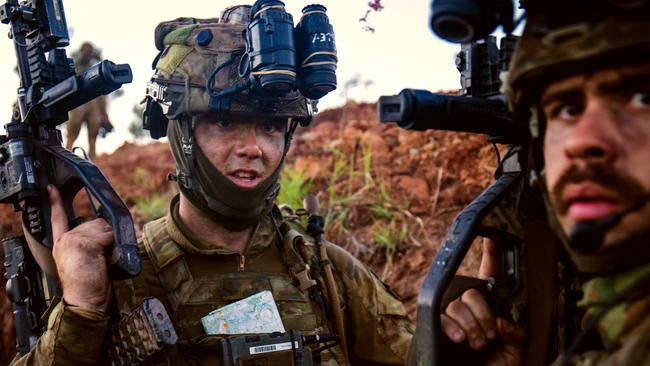
Despite emphasis on littoral manoeuvres and urban warfare the ADF’s Land Project 8710 to give Army small amphibious vessels for combat insertions has stalled. The acquisition began in 2020, tenders closed in 2022 but the Albanese Government and Defence Minister Richard Marles has still not moved on it despite the urgency outlined in the Defence Strategic Review, a stance for which Marles has received much criticism.
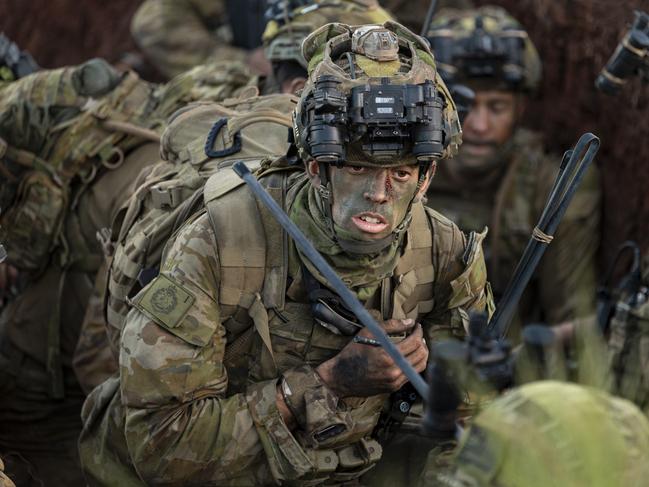
The DSR’s overall naval strategy including the option to acquire agile small corvette warships has also not progressed.
But while the government dithers, ADF troops alongside US Marine, Indonesian Marine and Japanese forces heavily drill for Indo Pacific compact littoral assaults and urban warfare.
“They are generating combat readiness … they are improving war fighting capability everyday working together up there in the Top End, it’s really good to see and that’s consistently improved over the last few years.”
In reference to the ADF, he added: “We must be ready to deploy and fight together at a moment’s notice.”
More Coverage
Originally published as Australia’s next war in the Pacific will be urban combat




